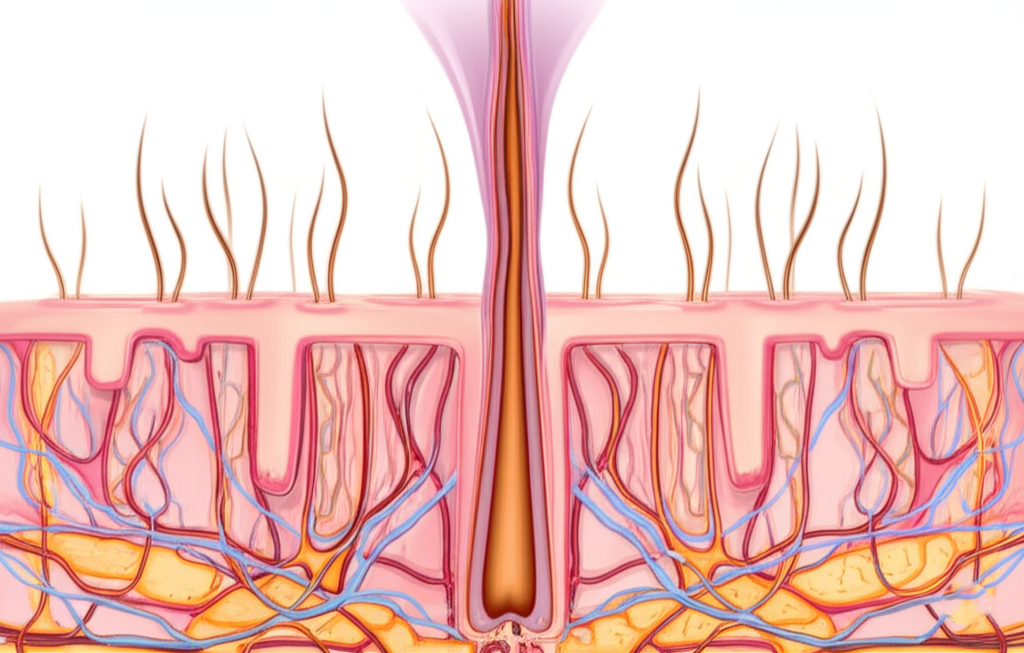Glowing Skin from Within: Unlocking the Benefits of Red Light Therapy

Who wouldn't want healthier, more radiant skin? In the quest for a youthful glow and solutions to various skin concerns, red light therapy (RLT), also known as photobiomodulation (PBM), has emerged as a promising and non-invasive option. Backed by a growing body of scientific research, including studies found on Google Scholar, RLT is showing remarkable potential in improving overall skin health. Let's explore the science behind this illuminating therapy.
Understanding Skin Health and Common Concerns:
Our skin, the largest organ of our body, is constantly exposed to environmental stressors, aging, and various conditions that can affect its appearance and health. Common concerns include wrinkles, fine lines, acne, scars, uneven skin tone, and inflammation. Maintaining healthy skin involves supporting its natural regenerative processes and protecting it from damage.

How Red Light Therapy Benefits Skin Health:
Red and near-infrared light wavelengths, when applied to the skin, can penetrate the tissue and interact with cells, leading to a variety of beneficial effects. Research highlighted in studies on Google Scholar suggests the following mechanisms:
-
Boosting Collagen Production: One of the most well-known benefits of RLT is its ability to stimulate fibroblasts, the cells responsible for producing collagen. Collagen is a vital protein that provides structure and elasticity to the skin. Increased collagen production can lead to a reduction in the appearance of fine lines and wrinkles, resulting in firmer, more youthful-looking skin.

- Reducing Inflammation: Inflammation is a key factor in many skin conditions, including acne, rosacea, and eczema. Studies indicate that RLT can help modulate the inflammatory response in the skin, reducing redness, swelling, and discomfort associated with these conditions.

- Improving Circulation: Red light can stimulate the formation of new blood vessels (angiogenesis) and increase blood flow to the skin. Improved circulation ensures that skin cells receive more oxygen and nutrients, which are essential for repair and regeneration, contributing to a healthier complexion.

- Reducing Acne: Research suggests that specific wavelengths of red and blue light can be effective in treating acne. Red light can help reduce inflammation associated with acne, while blue light can target acne-causing bacteria. Some RLT devices combine these wavelengths for comprehensive acne treatment.

- Promoting Wound Healing and Reducing Scars: RLT has been shown to accelerate the healing of wounds and reduce the appearance of scars. By stimulating collagen production and improving blood flow, it can help the skin regenerate more effectively.

Evidence from Scientific Literature:
A search on Google Scholar for terms like "red light therapy skin rejuvenation," "photobiomodulation collagen synthesis," "low-level laser therapy acne," and "red light therapy wound healing" will reveal numerous studies investigating the efficacy of RLT for various skin concerns. While specific protocols and results may vary across studies, the overall trend suggests a positive impact of RLT on skin health.
Incorporating Red Light Therapy into Your Skincare Routine:
Red light therapy devices for home use are readily available in various forms, such as LED masks, panels, and handheld devices. Treatment typically involves exposing the skin to the red light for a specific duration, as recommended by the device manufacturer. Consistency is key to seeing results, and many users incorporate RLT into their regular skincare routine.
Important Considerations:
-
Consult a Dermatologist: If you have specific skin conditions or concerns, it's always best to consult with a dermatologist before starting any new treatment, including red light therapy.
-
Choose Reputable Devices: Ensure that you are using a high-quality device from a reputable manufacturer that provides clear instructions for use.
-
Follow Instructions Carefully: Adhere to the recommended treatment times and distances to avoid any potential skin irritation.
Conclusion:
Red light therapy offers a gentle yet powerful approach to enhancing skin health. By stimulating natural cellular processes, RLT can contribute to a more youthful, radiant complexion, reduced inflammation, and improved healing. As scientific research continues to unfold, red light therapy is proving to be a valuable tool in the pursuit of healthy and vibrant skin. Explore the research on Google Scholar and consider if incorporating RLT could be the missing step in your skincare journey.


